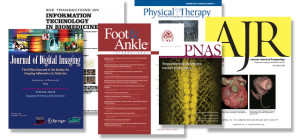Scientific papers are the heart of the science community; they are one of the major ways scientists communicate their results and ideas to one another. Scientific papers also contain the most up-to-date information about a field. However it can be pretty much a hassle and misleading if it is not read and interpreted properly and getting the science wrong has very real consequences. For example, when a community does not vaccinate children because they’re afraid of “toxins” and think that prayer or diet, exercise, and clean living is enough to prevent bacterial infection can cause harmful effects, which might later lead to a larger outbreaks of infectious diseases. You might have tried to read scientific papers before and been frustrated by the dense, stilted writing and the unfamiliar jargon.
Basically, there are two types of scientific papers: review articles and primary research articles. Review articles give an overview of the scientific field or topic by summarizing the data and conclusions from many studies while Primary research articles contain the original data and conclusions of the researchers who were involved in the experiments or study.
Reading a scientific paper is a completely different process than reading an article about science in a blog or newspaper or social media. Not only do you read the sections in a different order than they’re presented, but you also have to take notes and read it multiple times.
Most primary research papers will be divided into the following sections: Abstract, Introduction, Methods, Results, and Conclusions/Interpretations/Discussion. The order will depend on which journal it’s published in.
Before you begin reading, take note of the authors and their institutional affiliations. Secondly, take note of the journal in which it is published. Always begin by reading the introduction, and not the abstract. The abstract is that dense first paragraph at the very beginning of a paper that is often the only part of a paper that many non-scientists read when they’re trying to build a scientific argument.
Always identify what are the authors trying to answer with their research and what are the authors going to do to answer those specific questions.
As you approach the methodology section, You do not need to understand the methods in detail but simply get an idea on how reliable the methods that are been used in the study. For example, the sample size, has the study been conducted on 50, or 1000 people? For some research purposes, a sample size of 10 is sufficient, but for most studies larger is better
Results: In good papers, the majority of the results are summarized in the figures and tables. It is at this point where difficulties can arise if statistical tests are employed in the paper and we don’t have enough background to understand them. Well, here are some tips:
You will come across, words like “significant” or “non-significant”. These have precise statistical meanings. In everyday language, ‘significance’ means that something is extremely important. For example, an office manager might state that a new computer system has ‘significantly’ improved the efficiency of their staff. The term is used in a loose context, a belief that the new system is an instrumental factor in improving workflow. While in statistics, the significance test is the process used, by researchers, to determine whether the null hypothesis is rejected, in favor of the alternative research hypothesis, or not. (the null hypothesis refers to a general or default position: that there is no relationship between two measured phenomena. Rejecting or disproving the null hypothesis and thus concluding that there are grounds for believing that there is a relationship between two phenomena is known as alternative hypothesis). The test involves comparing the observed values with theorized values. The tests establish whether there is a relationship between the variables, or whether pure chance could produce the observed results.
Finally, read up the conclusion and discussion, before you jump the gun. It takes researchers years, sometimes decades, to pin down subtle, important findings about your health, but it takes bumbling journalists (or their editors) just a few seconds to screw it all up. Make a wise choice.
[This article belongs to The Malaysian Medical Gazette. Any republication (online or offline) without written permission from The Malaysian Medical Gazette is prohibited.]

